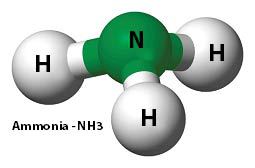As new environmental concerns and regulations appear, the ammonia chiller stands out among the many ways both science and the industry are looking to implement new strategies for cooling.
While ammonia refrigeration is not new (its first applications can be traced back more than a century ago), it’s being hailed as an efficient and sustainable alternative to other strategies in the field of industrial refrigeration. This is due mainly to its cost-effectiveness, particularly for large cooling systems.
Let’s take a look at what exactly is an ammonia chiller, how it works and its benefits.
What is an ammonia chiller
An ammonia chiller is a type of refrigeration system that uses ammonia as the refrigerant to absorb and remove heat from a space or a process. As we’ve mentioned above, it’s become a common option for industrial and commercial settings where large amounts of heat need to be transferred and dissipated.
How does an ammonia chiller work
The working principle of an ammonia chiller follows basic physics so that heat can be moved out of an area and into another, effectively making the first one cooler.
- First, an evaporator is employed, an area where ammonia is allowed to evaporate at low pressure and low temperature. This process means heat is absorbed from the surrounding environment.
- Then, the ammonia vapor is compressed by a compressor, which increases its pressure and temperature. This translates into raising the energy level of the ammonia.
- The high-pressure, high-temperature ammonia vapor is then condensed in a heat exchanger or condenser, where it releases the heat is absorbed during the previous evaporation process.
- Finally, after condensation, the high-pressure liquid ammonia is expanded through an expansion valve, which reduces its pressure and temperature. This causes it to partially vaporize, so that it can return to the evaporator to start the cycle again.
The benefits of using an ammonia chiller
- Efficiency: the thermodynamics and physical properties of ammonia make it an efficient refrigerant, particularly when incorporated to large ammonia systems. Its excellent thermodynamic properties include a high latent heat of vaporization and good heat transfer characteristics. These properties make ammonia chillers highly efficient in transferring heat and providing effective cooling. As such, an ammonia chiller can achieve the same cooling effect while employing less energy, cutting down on operational costs.
- Sustainability: ammonia represents a more environmentally-friendly option than synthetic refrigerants such as CFCs, some of which have been banned for their environmental damage. Ammonia breaks down quickly and doesn’t damage the ozone layer. In fact, ammonia has a zero ozone depletion potential (ODP) and a low global warming potential (GWP). This means it doesn’t have a significant impact on climate change, making an ammonia chiller an environmentally friendly choice.
As such, it’s able to meet strict refrigerant guidelines targeting other polluting products. As such, ammonia chillers meet or exceed regulatory requirements for safety and environmental standards, helping operators stay in compliance with local and international regulations. - Safety: ammonia spills or leaks (even when small) are easily detected thanks to this element’s strong odor.
- Costs: ammonia is relatively inexpensive compared to some other refrigerants. This adds up to making the ammonia chiller a cost-effective choice for large-scale cooling systems.
- Reliability: the ammonia chiller is known for its durability and reliability when properly maintained. They often have a longer lifespan compared to other types of chillers, reducing the need for frequent replacements and associated costs. Additionally, when properly maintained, ammonia chillers often have lower maintenance costs compared to some other refrigeration systems, and are less prone to issues like refrigerant leakage.
- Versatility: ammonia chillers can be used in various applications. In fact, they have become outstandingly popular in multiple sectors, including industrial refrigeration, food processing, chemical manufacturing and HVAC systems in large commercial buildings.
- Rapid and efficient cooling: ammonia's excellent heat transfer properties make it suitable for applications that require rapid and efficient cooling. This includes complex large-scale manufacturing processes.

It's worth noting that ammonia is toxic and flammable. This means any ammonia chiller must be carefully designed, installed and maintained, only relying on professional experts that are able to verify each step of the way.
Additionally, ammonia chiller systems require strict adherence to safety regulations to prevent accidents and exposure to the gas. Again, careful design, management and maintenance can reduce these risks substantially.
At ARANER, we work to develop district cooling systems that are sustainable without compromising their cost-efficiency.
As part of our vision to generate the most adequate cooling strategy for each project, we often consider ammonia chiller options and their benefits.
Get in touch with us to speak to our team about the best cooling option for your project.










